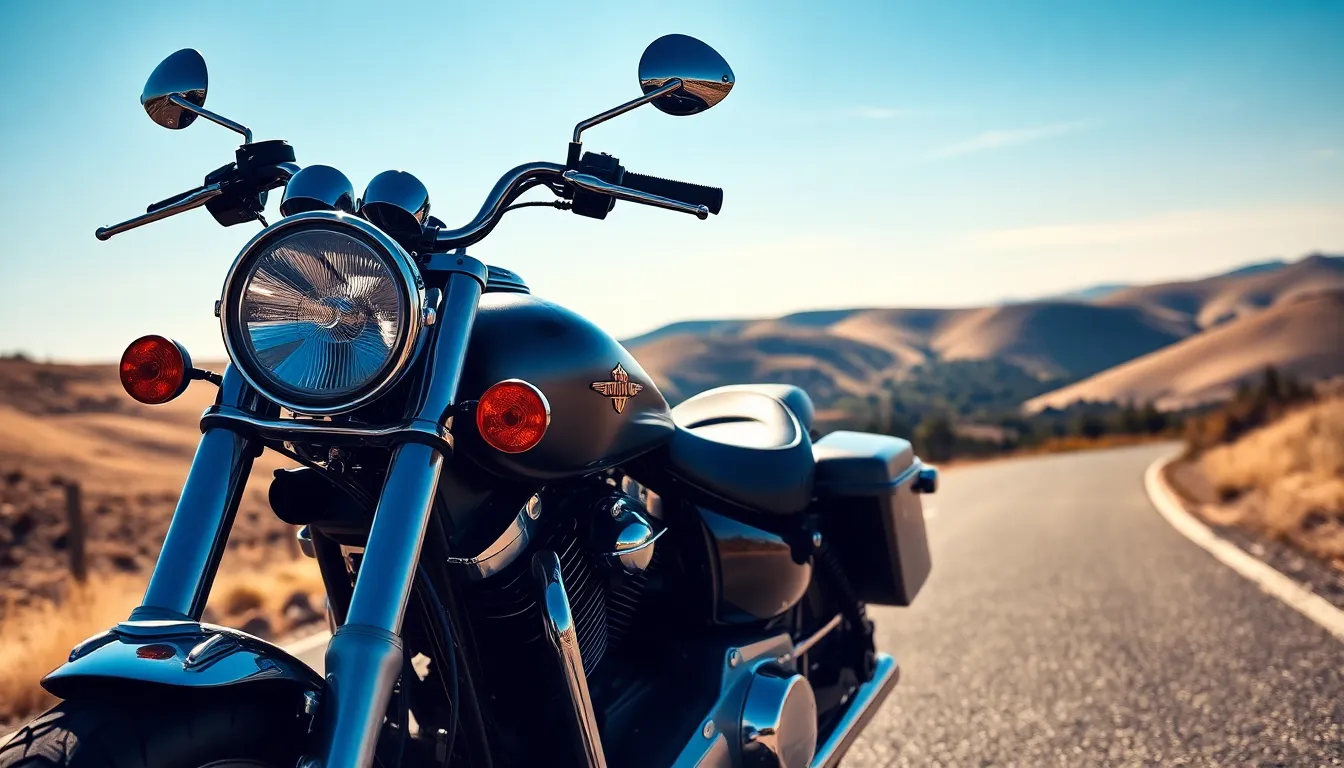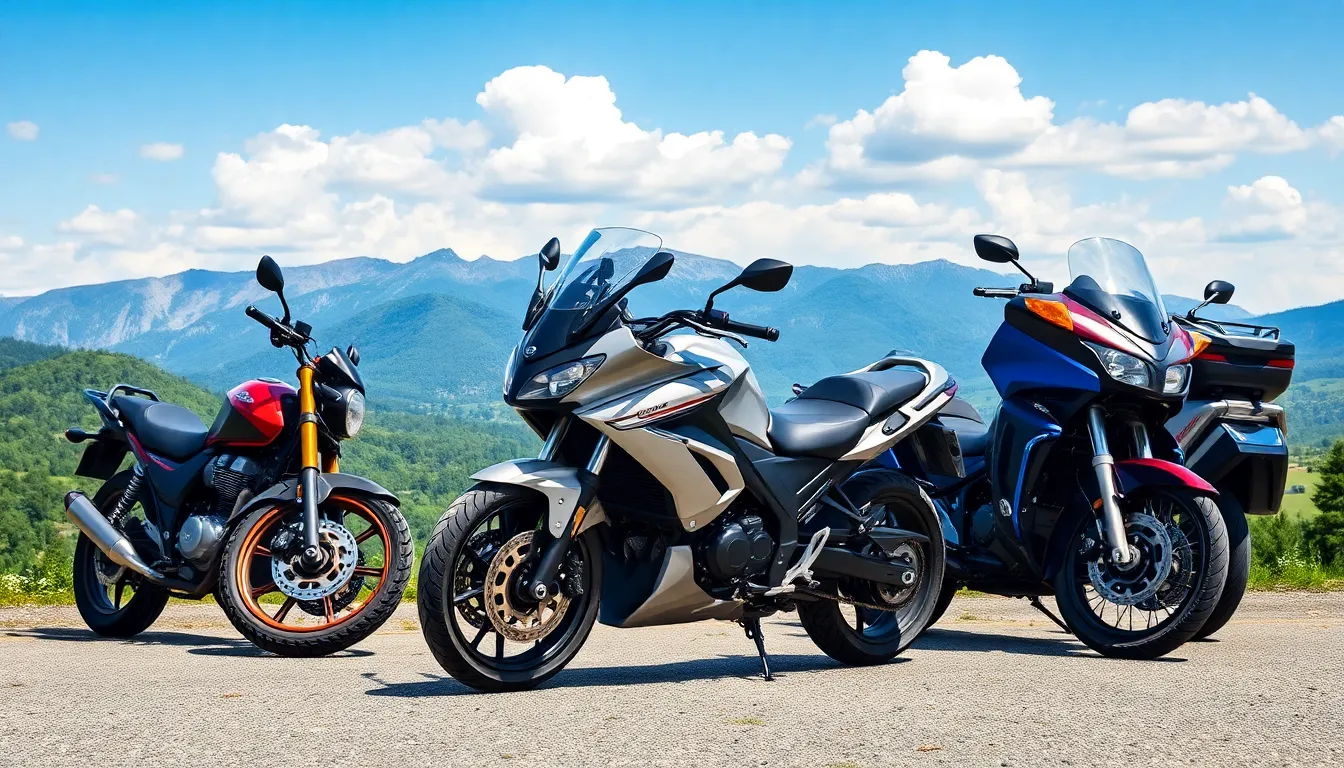When it comes to motorcycles, the age-old question looms: how long do they actually last? It’s a bit like asking how long a pizza lasts in a room full of hungry friends—some might say forever, but we all know that’s not true. Motorcycles can be a thrilling ride, but their lifespan varies based on several factors.
How Long Do Motorcycles Last
Motorcycle longevity depends on several key factors. Riders should consider maintenance, usage, and the bike’s type when assessing lifespan.
Factors That Influence Motorcycle Lifespan
Maintenance plays a crucial role in how long motorcycles last. Regular oil changes, tire rotations, and brake inspections can extend their life significantly. Riding habits also impact durability; aggressive riding often leads to faster wear. Additionally, environmental conditions affect longevity. Bikes exposed to harsh weather or salt will deteriorate quicker. Quality of parts matters; high-quality components tend to last longer than their cheaper counterparts.
Types of Motorcycles and Their Durability
Different motorcycle types offer varying durability levels. Cruiser motorcycles often feature robust engines designed for longevity. Sport bikes, while faster, typically endure more strain, affecting their lifespan. Touring motorcycles, built for long-distance rides, usually employ heavy-duty materials for added strength. Dirt bikes prioritize lightweight design, which may compromise longevity in exchange for performance. Each type has unique characteristics that affect how long it remains operational. Understanding these distinctions assists riders in making informed choices.
Average Lifespan of Different Motorcycle Types


Motorcycles vary in lifespan depending on their type and usage. Understanding these differences helps riders choose the right motorcycle for their needs.
Cruiser Motorcycles
Cruiser motorcycles typically last between 15,000 and 30,000 miles. These bikes feature a relaxed riding position, making them suitable for long journeys and comfortable rides. Generally, the robust design leads to greater durability. With regular maintenance, cruisers can exceed the average lifespan, reaching up to 100,000 miles. Proper care includes timely oil changes and inspections.
Sport Bikes
Sport bikes usually last around 12,000 to 20,000 miles. They’re designed for speed and agility, which often leads to more wear and tear. Aggressive riding styles contribute to shorter lifespans. Maintaining sport bikes through routine checks helps extend their longevity. Riders should focus on high-quality lubricants and regular tune-ups, maximizing performance and durability.
Touring Motorcycles
Touring motorcycles offer a lifespan of approximately 20,000 to 30,000 miles. Built for long-distance travel, these bikes prioritize comfort and stability. Frequent maintenance practices significantly enhance their longevity. Riders should invest in brake inspections and tire replacements, ensuring safe and smooth journeys. With dedicated care, some touring motorcycles can last well beyond 100,000 miles.
Maintenance Tips for Prolonging Motorcycle Life
Prolonging a motorcycle’s life requires adherence to specific maintenance tips and best practices. Staying proactive in motorcycle upkeep greatly enhances longevity.
Regular Maintenance Practices
Routine maintenance practices play a critical role in ensuring a motorcycle operates optimally. Oil changes are essential, with intervals varying based on manufacturer recommendations, often around every 3,000 to 5,000 miles. Brake inspections should occur regularly to guarantee safety; their longevity depends on riding style and materials used. Tire maintenance is also vital. Checking tire pressure and tread conditions reduces the risk of blowouts and enhances handling. Furthermore, chain lubrication maintains smooth operation. Engaging in consistent maintenance prevents minor issues from becoming costly repairs.
Importance of Proper Storage
Proper storage significantly impacts a motorcycle’s lifespan. Storing a motorcycle indoors protects it from harsh weather, reducing rust and corrosion risks. Using a motorcycle cover provides additional insulation against dust and debris. When not in use, the motorcycle’s battery should be disconnected or maintained with a trickle charger to prevent deep discharge. Additionally, adding fuel stabilizer prevents gasoline degradation, ensuring a smoother start after storage. Riders benefit from implementing these practices, which preserve the motorcycle’s integrity over time.
Signs of Wear and When to Replace
Identifying signs of wear on motorcycles can prevent unexpected breakdowns and enhance safety. Riders should watch for several key indicators that signal it’s time for maintenance or replacement.
Common Indicators of Motorcycle Aging
Visible signs of rust or corrosion on components often indicate aging. Unusual noises from the engine or transmission can suggest mechanical issues. Another common indicator is a decrease in performance or handling, which might manifest as rough acceleration or diminished braking. Frequent leaks, especially oil or coolant, mark potential problems. Moreover, tire wear patterns signal the need for replacement, affecting overall safety.
Evaluating Motorcycle Condition
Assessing a motorcycle’s condition involves multiple steps. Start by checking the oil and coolant levels; low levels may signal neglect. Next, inspect the braking system for wear, including pads and discs. Evaluating tire tread depth is essential for safe traction; replace tires if they’re worn. Additionally, examine lights and electrical systems, ensuring all components function correctly. Listening for odd noises during a test ride will provide critical insights into mechanical health. Following these evaluation steps enhances longevity and safety.
Conclusion
Motorcycles can offer thrilling experiences for years when properly cared for. Their lifespan hinges on maintenance practices riding habits and environmental factors. By following recommended upkeep routines and being mindful of riding style riders can significantly extend the life of their bikes.
Understanding the specific needs of different motorcycle types also aids in making informed decisions. Regular evaluations and attention to signs of wear can help prevent unexpected issues. With the right approach and dedication to care motorcycles can serve as reliable companions on the open road for many miles to come.

